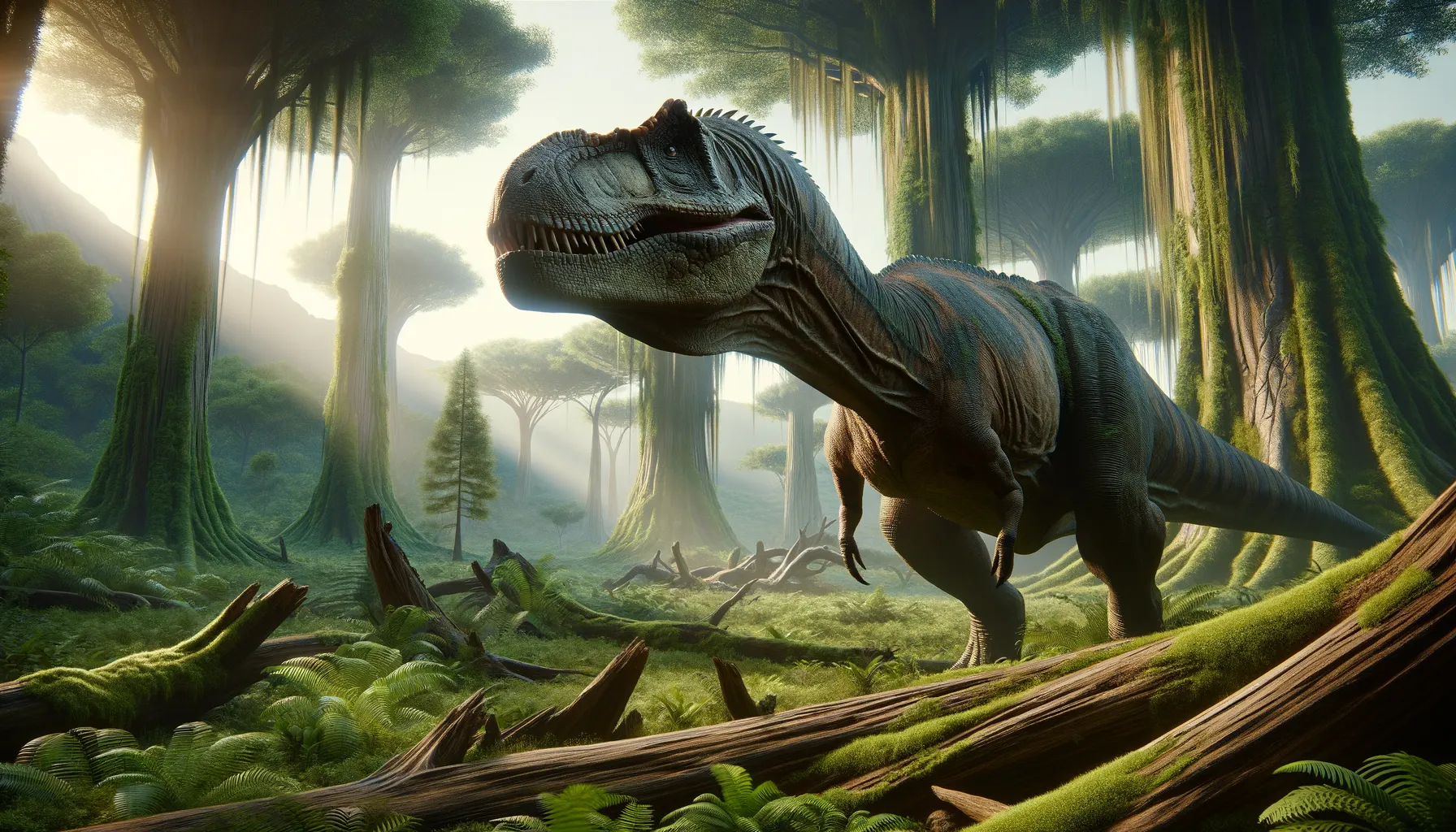
Saurophagus
Powerful predator of the Jurassic era.
Period
Jurassic
Length
Roughly 30 feet long.
Height
About 12 feet tall.
Weight
Approximately 2.5 tons.
Saurophagus was a mighty carnivorous dinosaur that roamed the Jurassic landscapes of what is now North America. Known for its robust size and powerful build, this predator could have been a dominant hunter of its time. While significant fossil evidence is limited, paleontologists believe it showcases features typical of large theropods, blending strength with agility, and played a crucial role in the prehistoric ecosystem as an apex predator.
Diet
Saurophagus's diet primarily consisted of large herbivorous dinosaurs. As a carnivorous theropod, it relied on its formidable jaws and sharp teeth to take down prey.
Hunting
Saurophagus likely hunted alone or in small groups, using its size and strength to ambush or overpower its prey. Its hunting tactics might have included stealth and sudden bursts of speed to capture unsuspecting dinosaurs.
Environmental challenges
Saurophagus faced environmental challenges such as shifts in climate and food availability. Natural disasters could have also impacted its habitat, causing migrations or dietary adaptations. Competition with other large predators might have driven it to develop unique hunting strategies to maintain its place in the food chain.
Speed
Moderate, adapted for steady-paced movement.
Lifespan
Estimated to be around 20 to 30 years.
First discovery
Discovered in the early 20th century in North America.
Fun Facts
- Despite its name meaning 'lizard eater,' the Saurophagus was a plant-eater, not a carnivore!
- The name 'Saurophagus' is often confused with 'Saurophaganax,' a giant theropod, but they are not the same.
- Saurophagus lived during the Late Jurassic period, around 150 million years ago.
- Fossils of Saurophagus have primarily been found in North America.
- This dinosaur's name comes from Greek words 'saurus' meaning lizard and 'phagos' meaning eater.
- Saurophagus was a part of the diverse Jurassic ecosystem that included famous dinosaurs like Stegosaurus and Allosaurus.
- Little is known about Saurophagus due to the scarcity of its fossil records.
Growth and Development
Young Saurophagus likely grew rapidly during their early years to reach a size that could deter predators. As it matured, its growth rate would slow, focusing more on strengthening its formidable physique. This growth strategy would have been essential for maintaining its top position in the ecosystem.
Habitat
Saurophagus inhabited lush, vegetated regions rich in prey, such as forests and open plains. These diverse environments provided ample opportunities to hunt and thrive. Water sources like rivers and lakes would have been vital for its survival, both for hydration and as a potential hunting ground.
Interaction with other species
As a top predator, Saurophagus interacted with other species mainly through predation and competition. Its presence would have influenced the behaviors and populations of other dinosaurs. Some species might have developed specific adaptations or behaviors to avoid this powerful predator.
Natural lifespan
Saurophagus could naturally live up to 30 years in the wild.
Reproduction
Saurophagus likely laid eggs in well-protected nests, ensuring their safety from potential predators. Parental care might have involved guarding the nest and young hatchlings from threats. As with many dinosaurs, they may have produced several offspring to enhance survival odds.
Social behaviour
While primarily solitary, Saurophagus might have engaged in social behaviors during mating or while protecting young. Communication through vocalizations or body language could have been essential in forming temporary alliances or warning rivals.
Fossil locations
Saurophagus fossils have been primarily found in various sites across North America. These sites offer critical insights into its morphology and life. The fossils indicate that it shared its habitat with several other dinosaur species, providing a glimpse into its ecological relationships.
